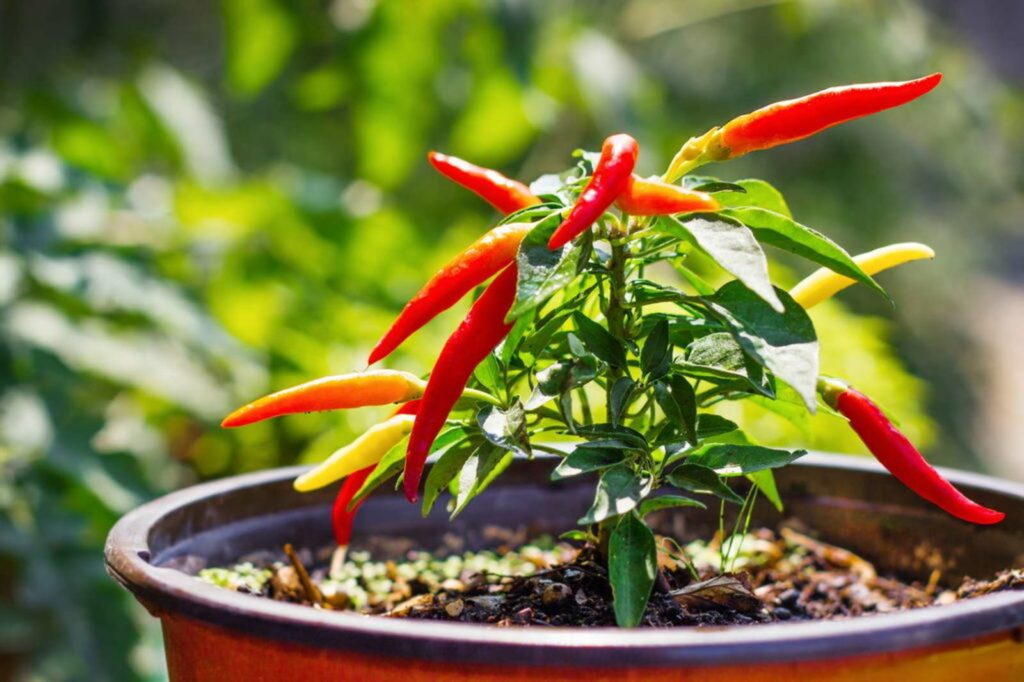
Cultivating hybrid chilli seeds at home is an exciting and rewarding gardening project. Hybrid chillies are bred for superior traits like higher yields, disease resistance, and enhanced fruit quality. Whether you’re a seasoned gardener or a beginner, growing hybrid chillies can be simplified with the right techniques.
This blog will guide you through the process step-by-step.
Why Choose Hybrid Chilli Seeds?
Hybrid chilli seeds are created by crossbreeding two parent plants with desirable traits. These seeds offer several advantages:
- Higher Yield: Hybrid varieties can produce up to 50-60 tonnes per hectare with proper care.
- Disease Resistance: They are less susceptible to common plant diseases.
- Improved Quality: Hybrid chillies have better size, shape, and flavor compared to traditional varieties.

Materials Needed
Before starting, gather the following materials:
- Hybrid chilli seeds
- Planters or containers
- Fertile soil (preferably sandy loam or loamy soil)
- Compost or organic manure
- Gardening tools (gloves, watering can, etc.)
- Support structures like stakes or canes for taller plants
Step-by-Step Guide to Cultivating Hybrid Chilli Seeds
1. Preparing the Seeds
Hybrid chilli seeds require proper preparation for optimal germination:
- Spread the seeds on a paper towel and spray them lightly with water.
- Fold the towel and keep it in a warm, humid place for about a week. Ensure the towel remains damp throughout.
- Alternatively: Sow the seeds directly into soil at a depth of 2–3 cm. Keep the soil moist but not waterlogged.
2. Choosing the Right Soil
Chillies thrive in well-drained, fertile soils rich in organic matter. Follow these tips:
- Use sandy loam or loamy soil with a pH range of 6–7.5.
- Mix compost or well-rotted manure into the soil to enhance fertility.
- Avoid salinity in soil, as high salt levels can hinder plant growth.
3. Planting and Germination
Once the seeds have sprouted:
- Transplant them into individual pots or directly into your garden.
- Maintain spacing of 38–45 cm between plants to ensure they have enough room to grow.
- Water regularly but avoid overwatering; follow a wet-dry cycle.
4. Providing Optimal Growing Conditions
Hybrid chillies need specific conditions to flourish:
- Sunlight: Ensure your plants receive 6–8 hours of direct sunlight daily.
- Temperature: Night-time temperatures should be at least 12°C before planting outdoors.
- Support: Use stakes or canes for taller varieties to prevent bending under the weight of fruits.
Care and Maintenance
Watering
Water every alternate day or as needed depending on weather conditions. Ensure consistent moisture levels without waterlogging.
Fertilization
Use organic fertilizers or balanced NPK fertilizers based on soil test results. Over-fertilization can lead to excessive foliage growth at the expense of fruit production1.
Pest and Disease Control
Implement integrated pest management techniques:
- Use biological control agents like neem oil.
- Regularly inspect plants for signs of pests or diseases like thrips or fungal infections.
Flowering and Harvesting
Flowering Stage
About 1–1.5 months after planting, your chilli plants will start flowering. Small white flowers will appear, which eventually fall off as baby chillies begin to grow in their place.
Harvesting
Chillies can be harvested once they reach 5–7 cm in length. For spicier chillies, leave them on the plant until they turn red. Use sharp tools for harvesting to avoid damaging the plant.

Common Challenges and Solutions
Low Yield
If your plants produce fewer fruits, check for:
- Insufficient sunlight
- Improper fertilization
- Poor soil quality
Pests
Aphids and thrips are common pests affecting chilli plants. Use organic sprays or biological methods for control.
Overwatering
Yellowing leaves may indicate overwatering. Adjust your watering schedule accordingly.
Growing hybrid chilli seeds at home is an excellent way to enjoy fresh, flavorful chillies while enhancing your gardening skills. With proper preparation, care, and maintenance, you can achieve high yields and enjoy the superior quality of hybrid chillies.
Start cultivating today and bring vibrant colors and spicy flavors straight from your garden to your kitchen!


